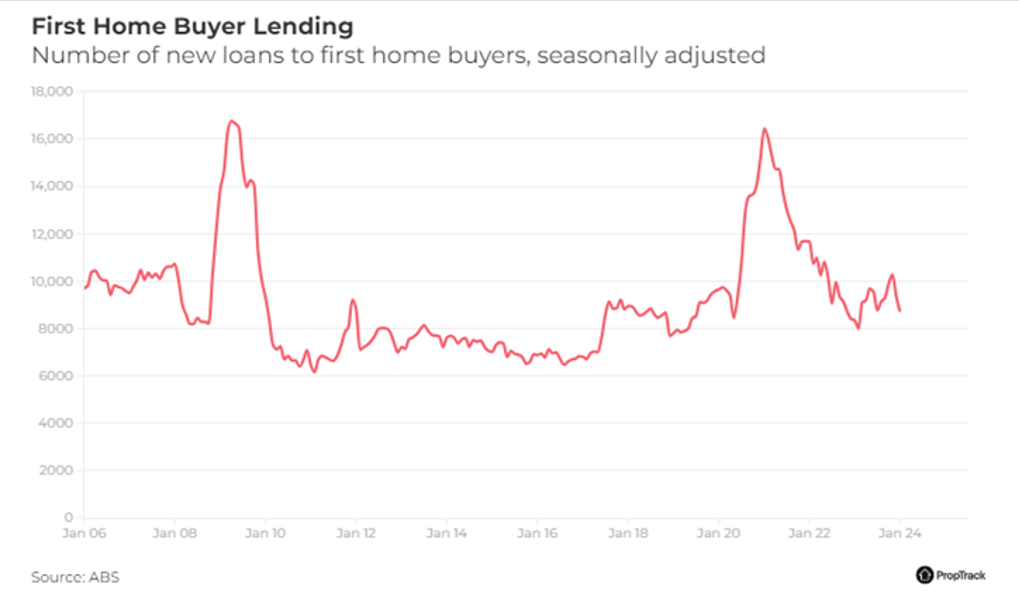

Recent ABS data revealed an unexpected 3.9% drop in new housing loan commitments for January 2024, following a 4.1% decrease in December.
Specifically, owner-occupier loan commitments saw a more significant fall of 4.6% month-on-month, with investor loans decreasing by 2.6%. This downturn stands in stark contrast to the observed uplift in home price growth and auction activity in the first two months of 2024.
The ABS’ finance head suggested the decline might indicate lenders’ operational improvements and faster loan processing times.

Despite the monthly decreases, a broader perspective revealed a resilient market, with new housing lending up 8.5% compared to the same period last year. This indicated a sustained uplift in housing market activity throughout 2023, challenging the forecasts of a broader downturn.
Lending to first-home buyers, although experiencing a 6.9% decline in January, demonstrated a 4.4% increase year-on-year. This is noteworthy given that “affordability [has sunk] to its worst level in at least three decades,” yet first-home buyer activity has “remained above its long-term average over the past quarter,” according to Eleanor Creagh (pictured above), PropTrack senior economist.

The resilience of home prices to the heightened interest rate environment and deteriorating affordability, with prices accelerating after a slowdown at the end of 2023, is remarkable.
The market has been buoyed by several factors, including “population growth, tight rental markets, resilient labour market conditions and home equity gains,” alongside “stable interest rate environment and expectations that interest rates will fall in the second half of 2024,” Creagh said.
This has also led to an increase in investor activity, attracted by strong growth in rents and increasing property prices.
Rental markets, however, continued to pose significant challenges for renters, with vacancy rates remaining low and rents growing at double-digit rates in many capitals. 
This tough scenario has “likely incentivised some first-home buyers to purchase their own home sooner than they otherwise would have,” as owning provides “the security of owning their own home and certainty of monthly costs,” Creagh said.
Addressing the acute shortage in rental stock remains crucial, with the federal government aiming to build 1.2 million new homes by 2029. Yet, challenges such as declining building approvals, high construction costs, and labour shortages hinder progress towards this goal.
“To meet that 1.2 million goal, the pace of building needs to increase from where it currently stands,” Creagh said, emphasising the need for a significant acceleration in construction efforts to alleviate market pressures.
With rental markets expected to remain tight and mortgage rates stabilising, the prospect of interest rate reductions later in the year could further stimulate demand among first-home buyers and investors, underscoring the importance of increasing housing supply to maintain market equilibrium and sustainability, PropTrack reported.
Get the hottest and freshest mortgage news delivered right into your inbox. Subscribe now to our FREE daily newsletter.
